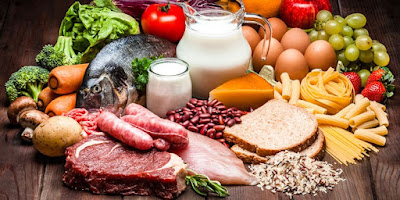
Nutrition alone can be an effective ADHD alternative treatment, as research suggests that nutritional deficiencies, particularly those involving essential fatty acids and amino acids, are a factor in Attention Deficit Disorder and learning deficiencies. According to a George Washington University School of Medicine study, hyperactive children who ate a high-protein meal performed equally well, if not better, in school than non-hyperactive children.
Oxford University (England) study looked at the effects of fatty acid supplementation in children with average intelligence but significant reading and writing difficulties. Purdue University researchers discovered that boys with low blood levels of Omega-3 fatty acids have a higher prevalence of ADHD.
Attention Deficit Hyperactivity Disorder (ADHD) is the most common behavioral disorder in children, and statistics and studies show that a significant number of ADHD children are deficient in essential fatty acids. Physicians commonly use stimulant drugs such as Ritalin for ADHD, but studies show that ADHD children whose treatment program only includes stimulant medication are at a high risk for vandalism, petty crime, alcoholic intoxication, and marijuana possession.
Fatty acids are essential for proper growth, mental function, the immune system, and brain development, and must be obtained through diet and supplementation. Flax seed and flax oil are the richest plant sources of Omega-3 fatty acids, and they provide Attention Deficit Disorder nutrition that is essential for healthy childhood behavioral and IQ development. Every ADHD nutrition food action plan should include one to two tablespoons of flax oil.
Nutrition as a form of Attention Deficit Disorder ADHD Alternative Treatment: Help Is Just Around the Corner
The quality of food we eat (or do not eat) has a significant impact on Attention Deficit Disorder and ADHD. Nutrition alone can be an effective ADHD alternative treatment for many people.
A growing body of research suggests that nutritional deficiencies, particularly those involving essential fatty acids and amino acids, are a factor in Attention Deficit Disorder and learning deficiencies.
For one minute, put down the Ritalin bottle and think about these ADHD nutrition research findings.
According to a George Washington University School of Medicine study, hyperactive children who ate a high-protein meal performed equally well, if not better, in school than non-hyperactive children.
An Oxford University (England) study looked at the effects of fatty acid supplementation in children with average intelligence but significant reading and writing difficulties. ADHD symptoms improved significantly in children given Essential Fatty Acids compared to children given a placebo in the control group. In 1981, researchers discovered a link between ADHD and low essential fatty acid levels.
In 1983, studies on essential fatty acid blood levels in children with behavioral problems confirmed this Attention Deficit Disorder nutrition link. In a 1987 study, researchers confirmed the link between essential fatty acid deficiency and Attention Deficit Disorder. Then, in a 1995 study comparing essential fatty acid levels in ADHD boys to a control group of boys without ADHD, Omega-3 fatty acid levels were found to be significantly lower. Purdue University researchers discovered in 1996 that boys with low blood levels of Omega-3 fatty acids have a higher prevalence of Attention Deficit Disorder ADHD.
The most common behavioral disorder in children is Attention Deficit Disorder. Although not all Attention Deficit Hyperactivity Disorder (ADHD) children are deficient in essential fatty acids, statistics and studies show that a significant number of ADHD children are.
Physicians commonly use stimulant drugs such as Ritalin for Attention Deficit Disorder, but studies show that ADHD children whose treatment program only includes stimulant medication are at a high risk for vandalism, petty crime, alcoholic intoxication, and marijuana possession. Furthermore, ADHD medications do not always work, have a slew of negative side effects, and never address the underlying cause of Attention Deficit Disorder.
Nutrition and food are one of the first aspects of treatment to consider with Attention Deficit Disorder ADHD, either as an ADHD alternative treatment or in conjunction with traditional ADHD stimulant drug treatment.
Fatty acids are essential for proper growth, mental function, the immune system, and brain development because they are used to make brain and nerve tissue in the body. Because the body cannot produce the two fatty acid families, Omega-3 and Omega-6, these key Attention Deficit Disorder ADHD nutrition ingredients must be obtained through diet and supplementation.
Despite the fact that the typical Western diet is high in Omega-6 fatty acids (found in corn, sunflower, canola, and safflower oil, margarine, vegetable oil, and shortening), most Americans, young and old, are deficient in Omega-3.
Many childhood behavioral and learning issues, according to learning specialists, are linked to Omega-3 deficiencies. Males are more affected by this deficiency because their requirements for essential fatty acids are higher in general. It comes as no surprise that boys are diagnosed with ADHD at a much higher rate than girls.
ADHD adults and parents of ADHD children should consume Omega-3 fatty acid-rich foods on a daily basis. However, many children refuse to consume Omega-3-rich fish such as salmon, mackerel, and sardines.
Enter flax seed and flax oil, the "food of the gods" for Omega-3 fatty acids.
Flax seed and flax oil are the richest plant sources of Omega-3 fatty acids, and they provide Attention Deficit Disorder nutrition that is essential for healthy childhood behavioral and IQ development. Every Attention Deficit Disorder ADHD nutrition food action plan should include one to two tablespoons of flax oil.
In addition to improving brain function, flax oil can help prevent heart disease and certain types of cancer. Flax oil softens skin, balances energy, burns fat, stimulates metabolism, strengthens the immune system, manages diabetes, and aids in the prevention of autoimmune disease and inflammatory disorders. Flax oil can also help with PMS and some menopausal symptoms.
Here are some delicious ways to incorporate flax oil into your daily diet:
In flavored yogurt, combine 1 tablespoon flax oil.
In fruit smoothies, 1 tablespoon of flax oil is virtually undetectable.
Instead of granulated sugar, combine 1 tablespoon flax oil with 1 tablespoon maple syrup or honey.
When making tuna or egg salad, use 1-2 tablespoons flax oil and reduce the amount of Miracle Whip or mayonnaise used by a factor of two.
Melt one stick organic butter and combine it with four ounces flax oil once it has cooled to room temperature. Refrigerate until the flax butter hardens before using it in place of margarine. Make Omega-3 "Ice Cream" by combining 2 cups yogurt, 1 tablespoon flax oil, and fresh or frozen fruit. When frozen, serve.
The majority of studies on the effects of essential fatty acids discovered that at least 10 weeks of supplementation are required to adequately raise fatty acid levels in brain cells. Before judging the effectiveness of nutrition on Attention Deficit Disorder and ADHD symptoms, follow a diet high in Omega-3 fatty acids for at least 10 weeks, preferably 12 weeks.
Important information about flax oil:
Flax oil is highly perishable and should always be kept refrigerated.
Heat destroys the beneficial properties of flax oil. Only use flax oil with cold foods, preferably cold proteins. Use only high-quality, cold-pressed flax oil when purchasing flax oil. The label should include the date pressed as well as a freshness date of four months or less from the pressed date. If not, do not purchase it! If you use flax seed oil after its expiration date, it will go rancid.
When it comes to Attention Deficit Disorder ADHD nutrition, essential fatty acids are not the only thing that is required. Amino acids, the building blocks of protein, are essential because both amino acids and essential fatty acids are required for the body to function. As a result, quality protein is essential in Attention Deficit Disorder nutrition.
People with attention deficits and hyperactivity can significantly reduce their unfocused or misdirected energy by starting the day with a protein-rich breakfast. A high-protein breakfast can improve concentration, decrease restlessness, and promote mental and physical calm.
Instead of sugared cereals, syrup-covered pancakes, sweet rolls, doughnuts, or danishes to start the day, try these brain-boosting breakfast ideas;
Breakfast of scrambled eggs, toast, and fruit.
Peanut butter on whole wheat toast.
Smoothie of fruits and yogurt with flax oil.
Shake with protein.
Bacon and eggs on toast with milk.
On an English muffin, an egg and sausage patty is served.
A tablespoon of flax oil and yogurt.




















